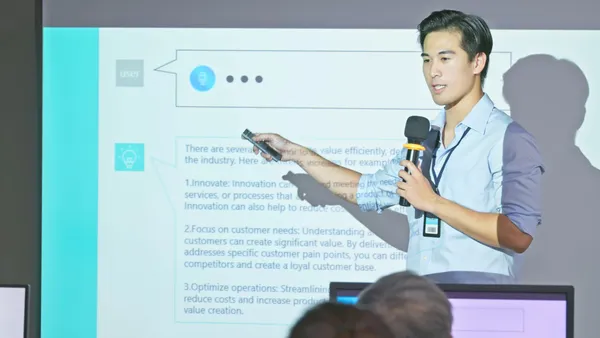Dive Brief:
- Educators may be hesitant to bring assistive technology into classrooms because of confusion on how the tools will be used, but it is key to helping all students across a range of abilities reach their full potential, Jennifer Sullivan, an adjunct instructor who has spent 16 years in both K-12 and higher ed, writes for Edutopia.
- Some teachers may think of these tools as cheating, but they are no more assistive than glasses, filling a need for many students. Others may also believe assistive tech is expensive, but some tools, like guided reading strips, can be extremely affordable.
- For educators who see these tools as adding more work to their plates, Sullivan points out that many options, like video captioning, are simply added with a click of a button — and can also be used by students with learning disabilities as well as those facing physical challenges. Finally, they should note assistive tech can be used at home as well as in school, and that using it first in the classroom may also help students incorporate it elsewhere in their lives.
Dive Insight:
Making sure assistive technology is available and in place in schools and districts is crucial. These tools can make all the difference when providing help to students across all ranges of abilities, allowing every student to be included in the classroom experience. As recently as 2018, 13% of students in the U.S between the ages of 3 and 21 depended on free specialized services to assist their learning.
As Sullivan also noted in Edutopia, not all assistive tech tools need to be an expensive investment. Many are available at affordable prices, and some are even free. Mobile phones and devices, for example, are often studded with assistive tools such as text-to-speech options via digital assistants like Apple's Siri on iPhones and iPads or the Google Assistant on Android devices. By just speaking aloud, students can craft notes and papers into documents and also access other apps and programs on their devices, as well as completing research.
A number of different apps and websites could be helpful for educators to tap when working with students with special needs in their classrooms. Teachthought has compiled a list of 15 different tools and online resources on its site, while the University of Michigan has a list of tools online designed specifically for students with dyslexia. Some of these tools are free, and some can be purchased.
Ultimately, these tools ensure all students, no matter what their needs may be, can have the education they require and deserve to thrive.












